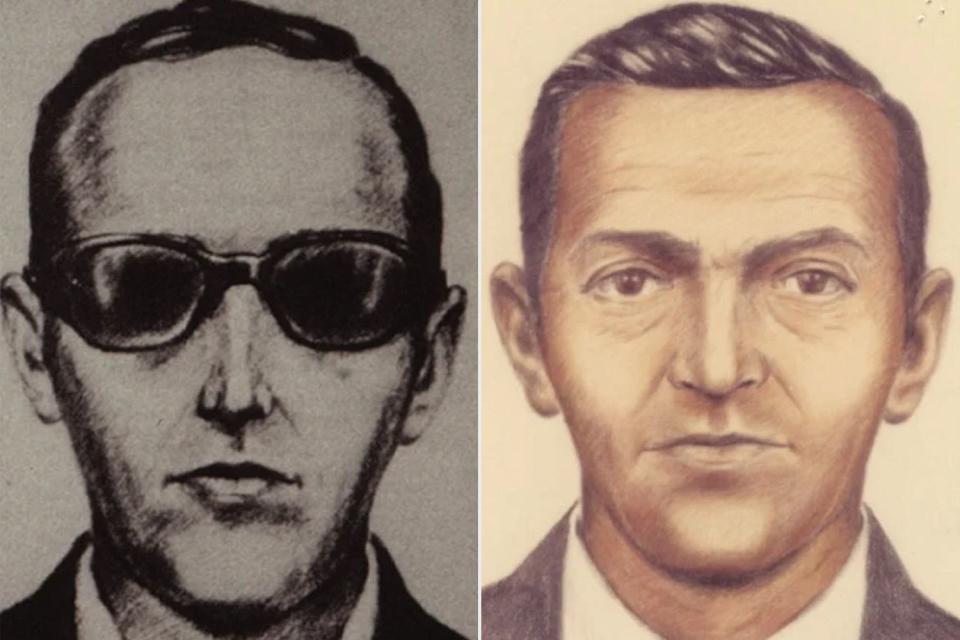New Evidence Discovered in D.B. Cooper Skyjacking Case Uncovers 'a Compelling Person of Interest'
Investigator Eric Ulis said he traced fragments from D.B. Cooper's tie to a Pennsylvania steel company that worked with Boeing

Federal Bureau of Investigation
D. B. CooperInvestigators are one step closer to uncovering the identity of infamous plane hijacker D.B. Cooper after new evidence came to light.
History's Greatest Mysteries star Eric Ulis, who is an expert at investigating crimes that took place in the past, shared with Fox News that a microscopic metal fragment found on Cooper’s tie has led him to a theory of who the famed plane hijacker could be.
Cooper is known for threatening to blow up a commercial jet from going from Portland, Ore., to Seattle, Wash., in 1971 before leaping into the night with a parachute and $200,000 he extorted as ransom. While his identity has never been discovered, he did leave behind a clip-on-tie on his seat on the plane, which several investigators have used as a starter clue.
The investigator told Fox News that scientists have “applied these sticky stubs” to the tie — which was likely purchased at a J.C. Penny around the Christmas season in 1964 for $1.49, according to Ulis — pulling off “some of the particles” on it. So far, scientists have pulled more than 100,000 particles from the clothing item, he told Fox News.
Related: Man Identified in History Channel Show as Notorious Skyjacker D.B. Cooper Denies Accusation
"You apply modern state-of-the-art technology to it, things they didn’t have back in 1971 when this occurred. It tells a story," Ulis told the outlet.
He said he was able to trace three of the fragments — which were partly made up of stainless steel and titanium — found on the tie using U.S. patents, which led him to a Pennsylvania plant called Crucible Steel. Ulis described the company as “a significant subcontractor all throughout the 1960s" that “supplied the lion's share of titanium and stainless steel for Boeing's aircraft."
Related: D.B. Cooper Case: A New Break in 1971 Hijacking Investigation
Ulis told Fox News that if Cooper worked at Crucible Steel, he would have had extensive knowledge of the plane he hijacked, a Boeing 727 aircraft, along with knowledge of the Seattle location, where Crucible Steel workers often traveled to for business as Boeing was their contractor.
He also noted that Boeing had a “significant downturn” in 1971, when the hijacking occurred, and that “it’s reasonable to deduce that D.B. Cooper may well have been part of that downturn."
The investigator and researcher told the outlet that he believed these findings point to the company’s titanium research engineer, Vince Peterson, who died in 2002, as the identity of Cooper.
Want to keep up with the latest crime coverage? Sign up for PEOPLE's free True Crime newsletter for breaking crime news, ongoing trial coverage and details of intriguing unsolved cases.
"I can put him in Seattle, I can put him at Boeing," Ulis said. "He’s a compelling person of interest.”
However, he also added that he isn’t crossing off any of the suspects off the list until he can fully solidify his findings. As for now, he said he’s “going to continue to dig” into Peterson’s history.
For more People news, make sure to sign up for our newsletter!
Read the original article on People.

